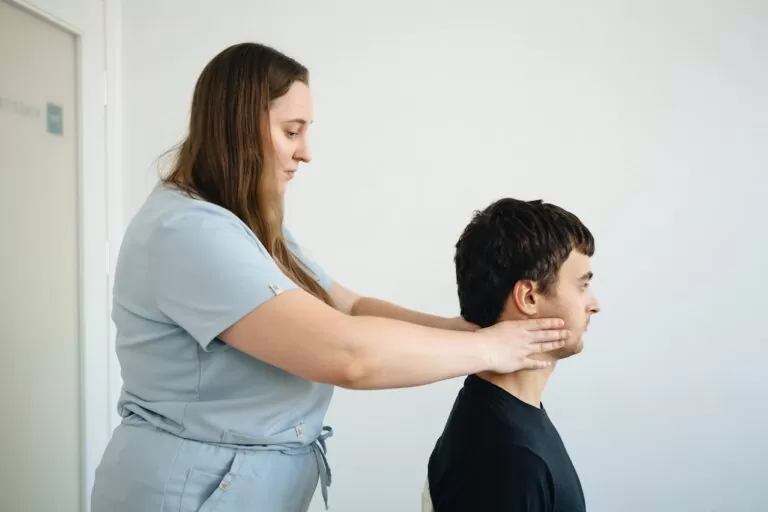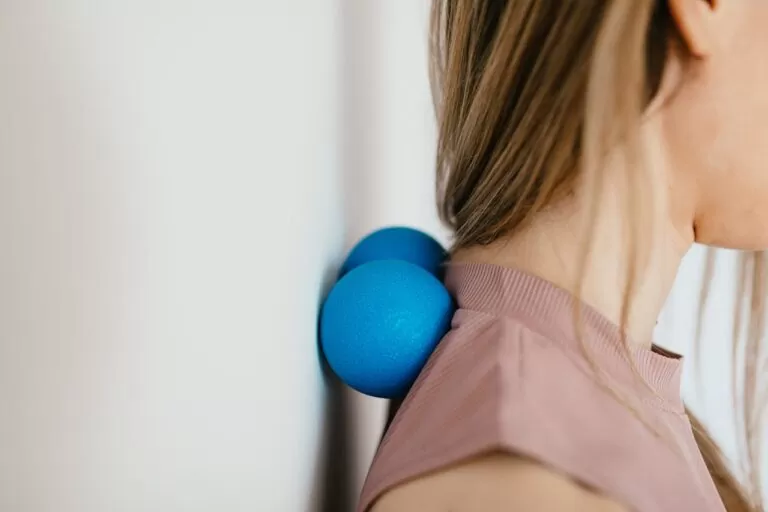Mechanical neck pain is a common issue that affects millions of people worldwide. This type of pain, often stemming from the muscles, ligaments, and joints, can significantly impact daily life. Whether it’s difficulty in turning your head, persistent discomfort, or even headaches, mechanical neck pain can be annoying.
In this blog, we will help you understand the link between poor posture and mechanical neck pain and explore effective ways of posture-correction interventions and improve neck posture.

Many of us spend long hours hunched over computers, staring at smartphones, or engaging in other activities that encourage a forward head posture. This position places undue stress on the neck’s muscles and joints, potentially leading to pain and discomfort over time. After recognising this root cause of mechanical neck pain, we can explore various types of interventions.
Research has shown that posture-correction interventions can be effective in alleviating mechanical neck pain. Studies indicate that improving posture can reduce the strain on neck muscles, decrease pain levels, and enhance functionality.
There are various posture-correction interventions available to help manage and avoid neck pain. Here are some commonly used methods:

Adjusting your workspace to promote better posture can be highly effective. This includes setting up your computer monitor at eye level, using an ergonomic chair that supports the natural curve of your spine, and ensuring that your feet are flat on the ground while sitting.
Exercises that strengthen the muscles supporting your neck and back can help improve posture. Some effective neck posture exercises include chin tucks, shoulder blade squeezes, and neck stretches. These exercises can reduce muscle strain and promote better alignment.
Devices like posture braces or straps can provide external support to maintain correct posture. These tools remind you to keep your shoulders back and your head aligned with your spine, reducing the tendency to slouch. Learning how to fix neck posture using these tools can significantly ease neck pain.
Working with a physical therapist can provide personalised guidance on improving posture and managing neck pain. Therapists can design a tailored exercise program and offer manual therapy techniques to alleviate discomfort. They can also teach you how to improve neck posture through specific exercises and adjustments.
Being mindful of your posture throughout the day and making small changes to your daily habits can have a significant impact. Regular breaks from sitting, avoiding prolonged periods in one position, and practising good posture habits can all contribute to better neck health. Learning how to correct neck posture through these daily habits can make a difference.

While general posture correction interventions provide a good foundation, here are more practical tips to further improve neck posture:
While posture-correction interventions can prevent and treat mechanical neck pain, it’s essential to consult a healthcare professional, such as a doctor or physical therapist, to determine the best course of action for your individual needs. They can assess your condition, provide expert advice, and create a personalised treatment plan to address your neck pain effectively. Each individual is unique, and what works for one person may not be suitable for another.

If you’re struggling with neck pain and suspect that poor posture might be a contributing factor, we are here to help!
Our team of mobile therapy professionals is dedicated to providing compassionate and effective care tailored to your needs across Sydney and Melbourne. Don’t let neck pain hold you back—contact us today and book a visit!

